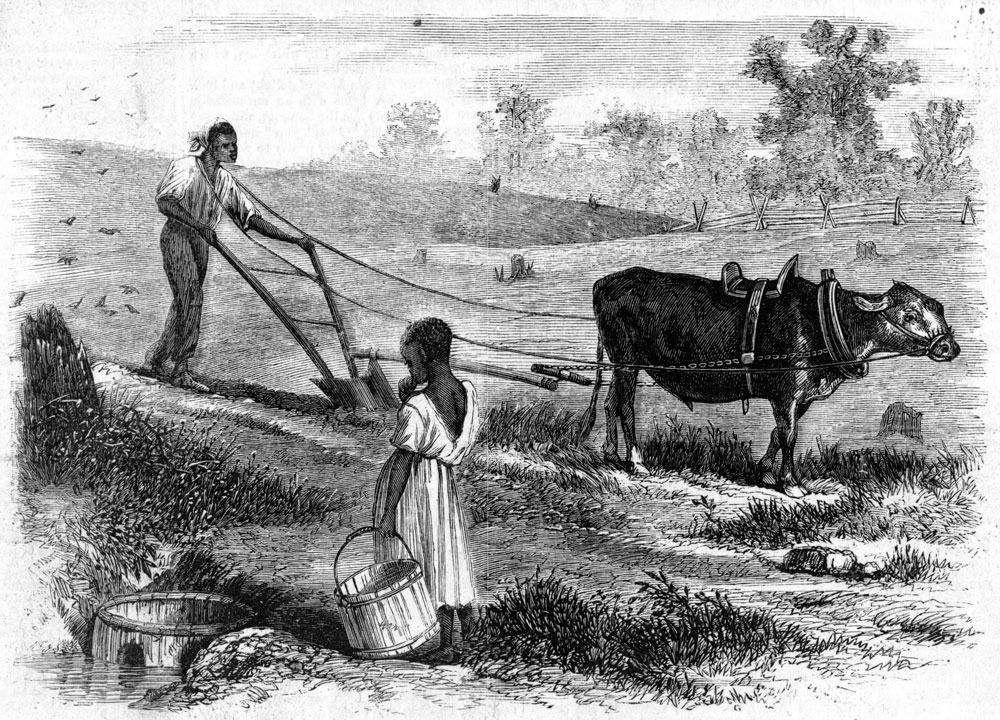
A sketch by Jas. E. Taylor of a farmer plowing in South Carolina, 1866. Source: Library of Congress
What kind of country is this going to be? This was the urgent question posed in the period immediately following the U.S. Civil War. When students learn about Reconstruction, if they learn about this period at all, too often they learn how the presidents and Congress battled over the answer to this question.
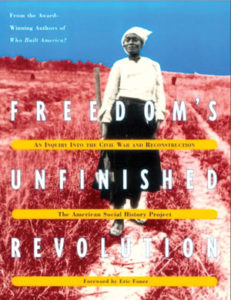 Textbooks and curricula emphasize what was done to or for newly freed people, but usually not how they acted to define their own freedom.
Textbooks and curricula emphasize what was done to or for newly freed people, but usually not how they acted to define their own freedom.
This role play asks students to imagine themselves as people who were formerly enslaved and to wrestle with a number of issues about what they needed to ensure genuine “freedom”: ownership of land — and what the land would be used for; the fate of Confederate leaders; voting rights; self-defense; and conditions placed on the former Confederate states prior to being allowed to return to the Union.
The role play’s premise is that the end of the war presented people in our country with a key turning point, that there existed at this moment an opportunity to create a society with much greater equality and justice.
The lesson is followed by chapter 11 of Freedom’s Unfinished Revolution: An Inquiry into the Civil War and Reconstruction (New Press, 1996) with discussion questions.
Tell Us Your Story — Get a Free Book
Have you used this lesson? We want to hear from you! Receive a free copy of the middle school historical fiction book Sugar or the high school historical fiction Black Was the Ink for your time. Learn more.
Teacher Testimonials
“Reconstructing the South: A Role Play” from @ZinnEdProject might be one of my favorite lessons. #teachreconstruction #teachtruth pic.twitter.com/QIde17V3K8
— Anna O’Brien (@mrsohbrienpkms) February 23, 2023
Reconstructing the South by Bill Bigelow really stands out as an exceptional lesson on every level, provoking deep conversation among teachers and among the students when run in class.
This lesson manages to accomplish two things extraordinarily difficult to do in the social studies classroom: make history seem undetermined and make the students see themselves as actors in shaping history.
The issues at stake are so profound that the students are invariably engaged and the methodology of stepping back and letting them deliberate lets loose powerful and unpredictable energy.
Leaders and conflicts invariably emerge. Students’ true personalities come to the surface and the line between radicalism and conservatism in politics becomes clearer than ever before.
There are pivotal moments that transcend the traditional learning experience, transforming the classroom into a vibrant arena of discovery, empathy, and empowerment. One such moment unfolded when I used the lesson Reconstructing the South: A Role Play with my class.
The impact of this lesson was profound. As students stepped into the shoes of individuals grappling with the aftermath of slavery, a transformation unfolded. The classroom opened up to broader societal debates of the era, with students passionately advocating for land ownership, voting rights, and protection against retaliation. The lesson transcended academic exercise, becoming a deeply personal journey for many students.
In particular, the decision-making process around the ownership of land sparked intense debate and revealed the complexities of justice and Reparations. Through this, students not only engaged with historical facts but also wrestled with ethical considerations, developing a nuanced understanding of the Reconstruction era and its lasting implications.
Moving forward, this lesson will become a model in my classroom, emphasizing the importance of adaptive teaching methods and the power of role-playing in education.
Reconstructing the South: A Role Play was not merely a lesson in history; it was an invitation to empathy, a challenge to critical thinking, and a testament to the power of education to bridge past and present. As we navigated the complexities of Reconstruction together, my students and I embarked on a journey that transcended the confines of the classroom, leaving us all transformed in the process.

The lesson Reconstructing the South: A Role Play is excellent for exploring the Reconstruction time period. Too often, periods of American history like this one are presented without relevant connections to today’s world, which make our not-so-distant past seem like ancient history to young learners.
The role play offers students the opportunity to see the importance of the time period: how much help formerly enslaved people needed, how formerly enslaved people were offered opportunities like never before, and how the country had the opportunity to make major changes in equality and civil rights. This has led to discussions about today’s racial issues of police, the justice system, employment, housing, etc., and, as a result, I have been able to open discussions on issues relating to federal powers versus states’ rights when it comes to civil rights. This is a wonderful lesson that I plan on using again and again.
I used Reconstructing the South: A Role Play in my classroom for the past two years, and it has worked very well. This lesson really helped my students see that history is not just facts or dates or words on a page, but is constructed from the actions of people. I think by having them step into the shoes of freedpeople, they can really consider the real life decisions that those who were freed had to make. The role-taking that this lesson necessitates allows them to make more connections to historical people and see themselves as a part of history, as well. Students liked this take or style of history much more and it helped them be ready to dig deeper into the Reconstruction era.

I have been an 8th grade social studies teacher for 10 years. This year has been my first year teaching a unit on Reconstruction — usually it is included in the 7th grade curriculum for our school, but due to changes at the district level it’s now in my hands. I was nervous but excited to build a new unit. I began the unit with the lesson Reconstructing the South: A Role Play. I wanted my students to imagine what freedpeople needed to feel truly free after emancipation, before we began examining what really happened. Students were deeply engaged in grappling with the dilemmas that freedpeople and the country faced.
After attending a hands-on workshop session with Adam Sanchez, and later accessing the published version of Reconstructing the South: A Role Play, I used this lesson in my classroom with several groups of students. Compared to a simple textbook reading or other previous ways they were learning about Reconstruction, they now had to become more deeply familiar with the goals, wishes, and aspirations of freedpeople, as well as the obstacles and challenges faced by freedpeople, through the background reading provided, to the student writing of interior monologues. The beauty of the lesson is that it reassigned agency to freedpeople as historical actors, and did so in a way that had historical empathy.
We use this lesson to kick off a robust unit on Reconstruction and students would take what they learned from this lesson and apply it throughout the unit and beyond. I have also used the Erasing the Black Freedom Struggle report and materials as one of several tools to evaluate how Reconstruction is taught in my school district.
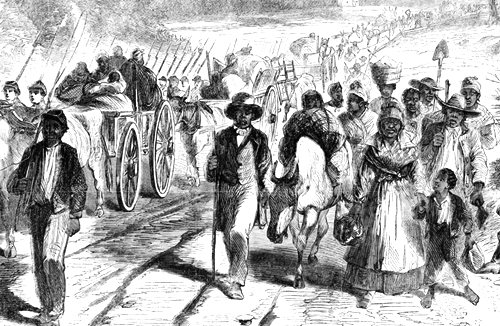
I used Reconstructing the South as a two-day lesson, following our study of slavery, the 1850s, and the Civil War.
I was tremendously impressed by the quality of thought the students gave to the assignment and the discussions they had. (As an aside, I also really liked the concept of letting them determine what shape to give the discussion. I was really impressed that they ran a completely self-sustaining discussion for 45 minutes in every period, while I just typed notes madly.)
In addition to showing some significant empathy for the plight of the freedmen, students also brought up a wide range of issues that, to them, fit into the topic: The need for a minimum wage, possible impacts on child laborers, the politics behind women’s suffrage, second amendment rights, whether soldiers should remain on duty or be able to return to families, and much, much more. This really provided a terrific basis for the Reconstruction discussions that will follow.
Here are some of my favorite responses:
Chloe (on who could own land): Freed slaves should get three-fifths of the available land in the South because, for one, that’s ironic and also because there are more slaves than plantation owners.
Brianna (on a promise to grow cotton on the land): I would not be willing to have to grow cotton on my land because it’s like we’re being controlled by our equals.
Arielle (on that promise): At first I kind of agreed they should stay on the plantations. Now I’m second-guessing myself. It seems like slavery without slavery. The former slaves should be able to grow what they want and not be tied down by other people’s ideas.
Momin (on punishing confederate leaders): [We should punish them] because they were the ones who seceded and started the war. Lincoln said that if we have to shed the same blood that slave masters caused in slaves, then so be it. I don’t think we have done that yet.
Dax (on voting rights): Everyone should be able to vote because the reason for voting is to determine what the people in the United States want, and those decisions will affect everyone in the United States.

Last year my district had an after hours book club that focused on Teaching for Black Lives and utilizing lessons from the text in our classrooms. In order to prepare for the Reconstruction Role Play, I first divide my class into several groups to teach the events that led up to that moment in history. Students are give three days to prepare a 40 minute lesson in small groups, which they then present to the class. The lesson must include a bell ringer, a main activity, and then some sort of assessment to check if everyone understood the information. Between presentations I have three days to teach anything the students missed.
The first group to go discusses the transatlantic slave trade. This is not the first time the students have heard of the slave trade but it is the first time it is the focus of the whole week. Following the first group is the Civil War, and then comes a group that introduces Reconstruction. I find that by having the students study each subject in a group and then teach it, they are more invested in the material than if I was to present it to them on my own. We then follow up our week on Reconstruction by completing the Role Play and finish our unit looking at the triumphs of Black soldiers and citizens during the era, including the growing number of voters and politicians.
As I do not wish for Reconstruction to be something the students memorize and forget, we revisit the subject/time period during our Women’s Suffrage unit, again in our Industrialization/Railroad unit, for a third time during the Wild West, and then recap all four units at the end in a Legacy of the 1800s section. Highlighting important figures like Bass Reeves and Sojourner Truth helps students to connect to the issue on a personal level and see Black figures as the heroes of their own story.
This spring I taught a unit on the Civil War and Reconstruction in my junior and senior U.S. history classes. During the unit, I leaned heavily on lessons and resources created by the Zinn Education Project.
First, I taught the lesson “Who Freed the Slaves?” which allowed my students to explore the ways escaped slaves, Black soldiers, and abolitionists fought to end slavery. Students powerfully shifted their perspectives to see how Black people in particular were responsible for their own freedom through courageous struggle rather than simply being freed from a single governmental official on high.
I followed up this lesson with a Reconstruction role-play wherein my students took on the perspectives of freed people looking to address the most pressing questions after emancipation. In this lesson, students engaged with the critical questions free Black people struggled over while attempting to create a new, more just society. These questions prodded deep reflection on land ownership, political participation, community sovereignty, and self-defense.
Rather than presenting a simple two-sides situation, this lesson showed a multitude of pathways that could have been taken at this historical juncture. Most of my students shared opinions that advocated for more just and equitable solutions to problems than happened in reality. This lesson allowed my students to see the precarious and complex position freed people were in and appreciate the incredible promise present in this moment. While we continued on into the backlash against Reconstruction, this promise lingered and stood out as we considered the important legacy of this era.
The Reconstructing the South: A Role Play lesson was a great way to re-emphasize how history is not just about the past, but also about the present and the future. The students engaged in conversations about landownership and its connection to the “American Dream.”
Additionally, students were able to begin talking about privilege and how land and wealth are connected to opportunities. They were able to discuss generational impacts still felt today that began with Reconstruction. It was powerful to see so many students connect this historical time period to ongoing issues that affect us all today.
I used two of the Reconstruction role plays in my 10th grade U.S. history class. After discussing their ideas on what “freedom” should entail and sharing four main categories that the freed slaves pursued — family unity, education, political involvement, and land ownership — I had the students participate in Reconstructing the South: A Role Play. Without any knowledge of how Reconstruction turned out, the students effectively reasoned on the need to grant economic independence to the formerly enslaved people and the need for defensive measures against retaliation. Their main struggle was with how to appease white politicians’ fears over reappropriating land in order to get their proposal passed in Congress. The activity pushed the students to grapple with attaining justice within the confines of reality.
The second activity I did at the end of the Reconstruction unit. After discussing the peak of Radical Reconstruction and its decline to the point of being seen as a failure, I had the students complete the Who Killed Reconstruction? A Trial Role Play. Despite saving Capitalism for the end and the student assigned to that topic effectively showing how the previous prosecutors’ arguments also point to Capitalism being the primary guilty party, the jury still placed the largest amount of blame on Racism.
Read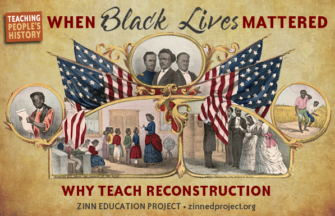 more comments from teachers about this lesson.
more comments from teachers about this lesson.
Teach Reconstruction Campaign
“Reconstructing the South” is one of the lessons offered as part of our campaign to Teach Reconstruction.
Learn more in the Zinn Education Project national report, “Erasing the Black Freedom Struggle: How State Standards Fail to Teach the Truth About Reconstruction,” and find teaching resources on Reconstruction below.


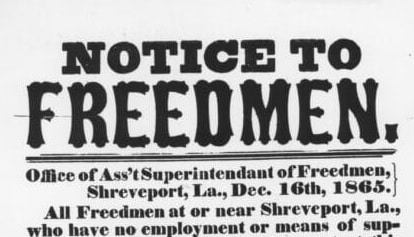
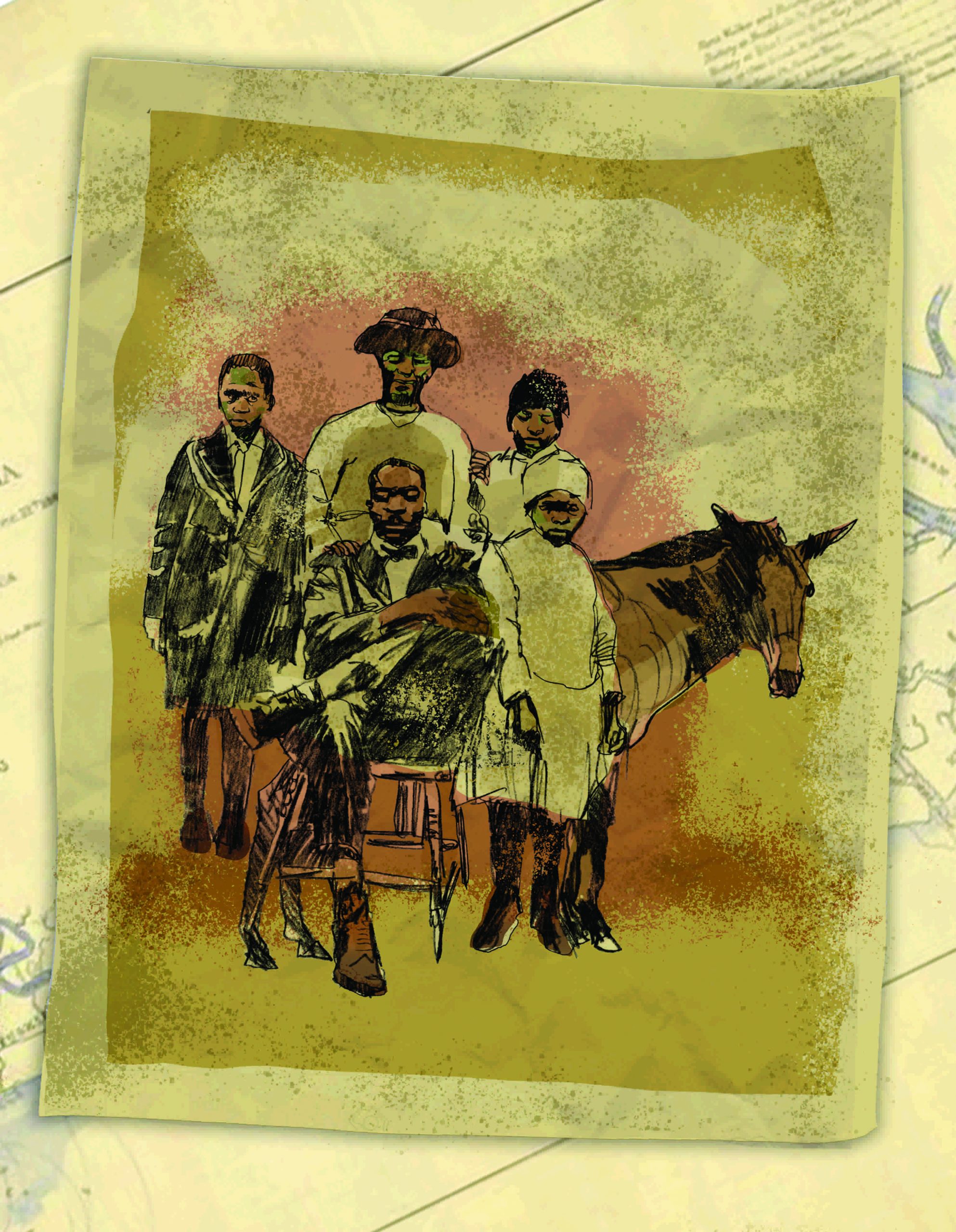
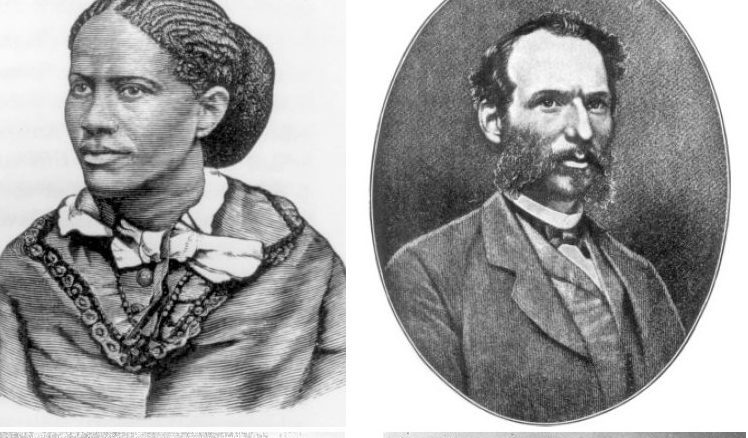
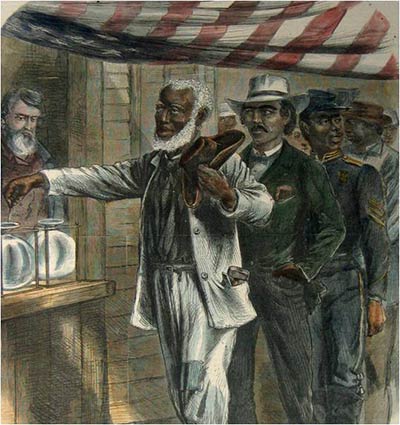

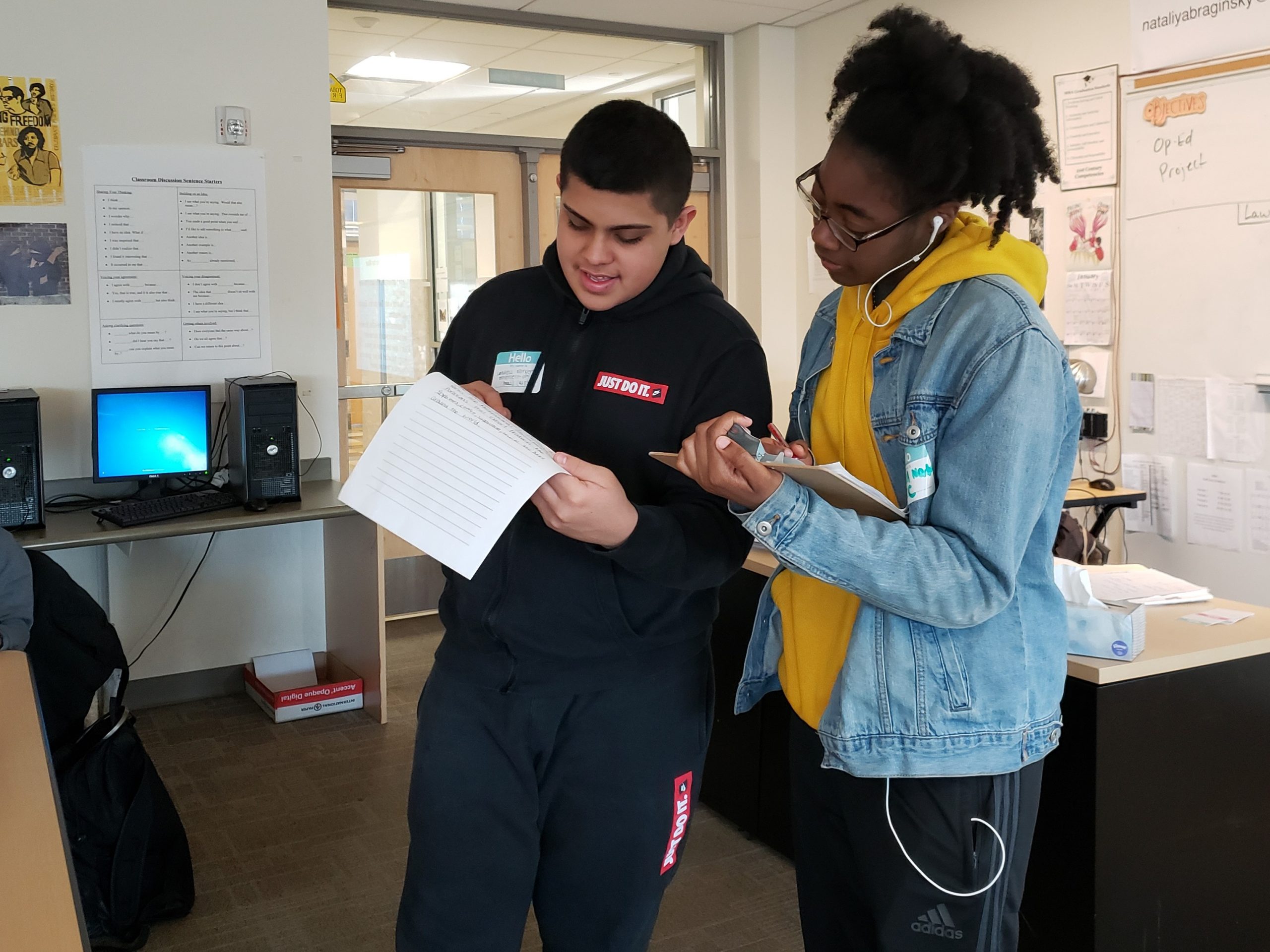
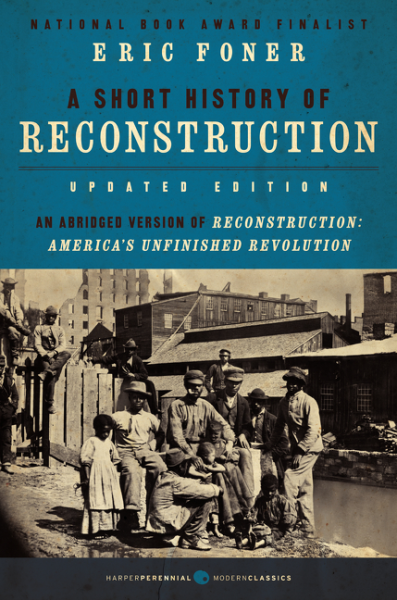
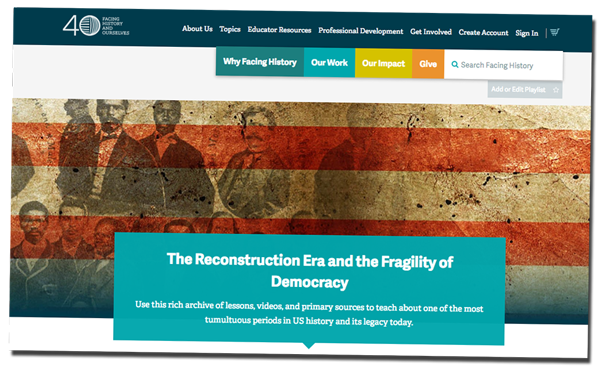






Twitter
Google plus
LinkedIn